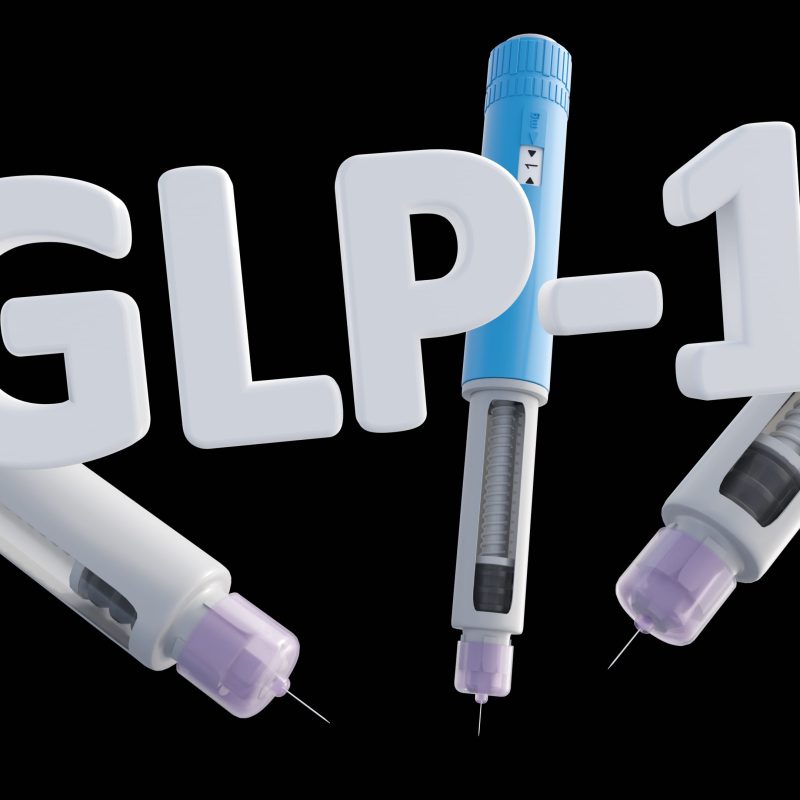
There’s a question more and more personal trainers are starting to hear at the end of a training session or over coffee after a client has achieved remarkable progress: “What happens when I stop taking the shot?”
The “shot,” of course, refers to a GLP-1 receptor agonist. Whether it’s semaglutide, liraglutide, or tirzepatide, these medications have transformed the weight loss industry and changed conversations in gyms, clinics, and kitchens nationwide. Given the results, it’s easy to see why the excitement is genuine. But, like any medication, what happens once the injection pen is permanently put away? The answer is not necessarily what you might expect or what your clients want.
Therefore, let’s discuss what every coach, trainer, and wellness professional must understand when helping clients transition off GLP-1s—and how to protect their progress moving forward.
The Rebound Is Real
Here’s the reality: weight regain is not a myth; it’s a data-backed certainty for many clients who stop taking GLP-1 agonist therapies.
To illustrate, studies show that as much as two-thirds of the weight lost during GLP-1 therapy can be regained within a year of stopping the medication (Old et al., 2025). Likewise, another recent review found that individuals switching from GLP-1s to placebo regained an average of 14% of their body weight within 52 weeks (Paddu et al., 2024).
However, the scale’s number tells only part of the story. What often returns is fat mass, not muscle, which fundamentally alters the situation. To this end, this shift is not merely cosmetic but rather metabolic. For example, replacing lean tissue with fat elevates the risk of insulin resistance, chronic diseases, and metabolic decline. Furthermore, suppose clients have already experienced muscle loss during treatment due to appetite suppression or inadequate protein intake. In that case, the post-GLP-1 period can lead to a “double loss” — a concomitant reduction in muscle alongside an increase in fat mass, ultimately resulting in a significantly weakened metabolic engine to maintain balance (Evans & Cummings, 2024).
Why Muscle Loss Magnifies the Problem
Let’s be clear: echoing the insights of Dr. Gabrielle Lyon, “muscle is the organ of longevity.” It serves more than just strength or aesthetic purposes; it facilitates glucose uptake, stabilizes hormones, and plays a vital role in mitochondrial function (Jiao et al., 2024; Andreozzi et al., 2016). When clients lose muscle—whether due to under-eating, inactivity, or medication-induced suppression—they ultimately forfeit much more than strength; they diminish the essential tissue that sustains fat loss and promotes longevity.
In this context, GLP-1 medications can significantly suppress appetite, leading to drastic declines in protein and calorie intake, particularly without guidance from a coach or dietitian. While some studies have indicated positive changes in mitochondrial function during active treatment, these benefits tend to diminish once treatment is discontinued (Old et al., 2025; Naveed et al., 2025). Consequently, the body becomes more susceptible to fat storage and less capable of preserving lean mass.
The Role of the Trainer: Coaching Before the Crash
As certified personal trainers, this is where we step in. As trainers, we’re not here to challenge someone’s decision to use medications. One, it’s beyond our scope of practice, and two, remaining judgment-free is essential to our integrity, business acumen, and success.
Instead, we focus on optimizing outcomes, protecting muscle, and building habits that last beyond pharmacological support.
In this regard, the most successful post-GLP-1 transitions we’ve seen all follow the same rule: training and habit formation must come before discontinuation. Here’s what that looks like in practice.
- Build a Baseline of Strength: Clients who’ve spent the last 6–12 months building strength, practicing movement patterns, and logging workouts are more likely to sustain momentum once the shot stops.
- Create a Protein Plan: Appetite will return—often with a vengeance. If clients don’t have a strategy for protein-forward eating, they’ll revert to old patterns. Teach them how to build meals with high-quality protein and to track their intake during the transition phase.
- Periodize Their Off-Ramp: GLP-1 tapering or discontinuation shouldn’t be abrupt. Ideally, clients should already be strength training 2–3x per week, walking regularly, and engaging in mindful eating practices before the medication is reduced or stopped.
- Coach for Identity, Not Just Outcomes: The best defense against weight regain isn’t just another diet, it’s a new identity. Help clients see themselves as “someone who lifts,” “someone who eats for performance,” or “someone who prioritizes strength and muscle.” Identity drives behavior. For more information on the power of identity, I personally recommend James Clear’s Atomic Habits book, as he provides a masterclass in this often underutilized approach.
Future-Proofing the Progress
So, what happens when the shot stops?
If we’ve done our job, not much. Clients who have been coached through the weight loss phase with purpose—who’ve trained their bodies, strengthened their routines, and understood the “why” behind the macros—will bounce back.
Sure, some fluctuations may occur, but the overall trend remains positive: increased strength, better energy, and sustained control. However, clients who coast by relying only on medication without building habits or lean muscle are more likely to bounce back. And this isn’t about willpower; it’s about physiology. It’s about laying the foundation before the structure changes. The future of health coaching in the GLP-1 era isn’t about being for or against medications. It’s about bridging the gap between quick fixes and lasting change.
Final Thoughts: This Is Our Moment
As personal trainers, we are no longer just “fitness people.” We are behavior change specialists, metabolic protectors, and, perhaps most importantly, muscle-centric guides in a weight-centric world.
GLP-1s may have changed the way clients lose weight. However, it’s our responsibility to ensure they don’t lose themselves in the process, and that when the shot stops, their progress doesn’t.
Muscle is the insurance policy. Strength is the strategy. And coaching is the catalyst.
The weight loss story doesn’t end when the medication does.
It begins with what we do next.
References
Andreozzi, F., Raciti, G., Nigro, C., Mannino, G., Procopio, T., Davalli, A., … & Folli, F. (2016). The GLP-1 receptor agonists exenatide and liraglutide activate glucose transport by an AMPK-dependent mechanism. Journal of Translational Medicine, 14(1), 229. https://doi.org/10.1186/s12967-016-0985-7
Evans, W., & Cummings, S. (2024). Weight loss–induced muscle mass loss. JAMA, 332(16), 1394. https://doi.org/10.1001/jama.2024.17212
Jiao, R., Lin, C., Cai, X., Wang, J., Wang, Y., Lv, F., … & Ji, L. (2024). Characterizing body composition modifying effects of a glucagon‐like peptide 1 receptor‐based agonist: A meta‐analysis. Diabetes, Obesity and Metabolism, 27(1), 259–267. https://doi.org/10.1111/dom.16012
Naveed, M., Pérez, C., Ahmad, E., Russell, L., Lees, Z., & Maybury, C. (2025). GLP‐1 medication and weight loss: Barriers and motivators among 1659 participants managed in a virtual setting. Diabetes, Obesity and Metabolism, 27(7), 3780–3788. https://doi.org/10.1111/dom.16405
Old, V., Davies, M., Papamargaritis, D., Choudhary, P., & Watson, E. (2025). The effects of glucagon‐like peptide‐1 receptor agonists on mitochondrial function within skeletal muscle: A systematic review. Journal of Cachexia, Sarcopenia and Muscle, 16(1), 71–83. https://doi.org/10.1002/jcsm.13677
Paddu, N., Lawrence, B., Wong, S., Poon, S., & Srivastava, G. (2024). Weight maintenance on cost‐effective antiobesity medications after 1 year of GLP‐1 receptor agonist therapy: A real‐world study. Obesity, 32(12), 2255–2263. https://doi.org/10.1002/oby.24177
Sargeant, J., Henson, J., King, J., Yates, T., Khunti, K., & Davies, M. (2019). A review of the effects of glucagon-like peptide-1 receptor agonists and sodium-glucose cotransporter 2 inhibitors on lean body mass in humans. Endocrinology and Metabolism, 34(3), 247–259. https://doi.org/10.3803/enm.2019.34.3.247






